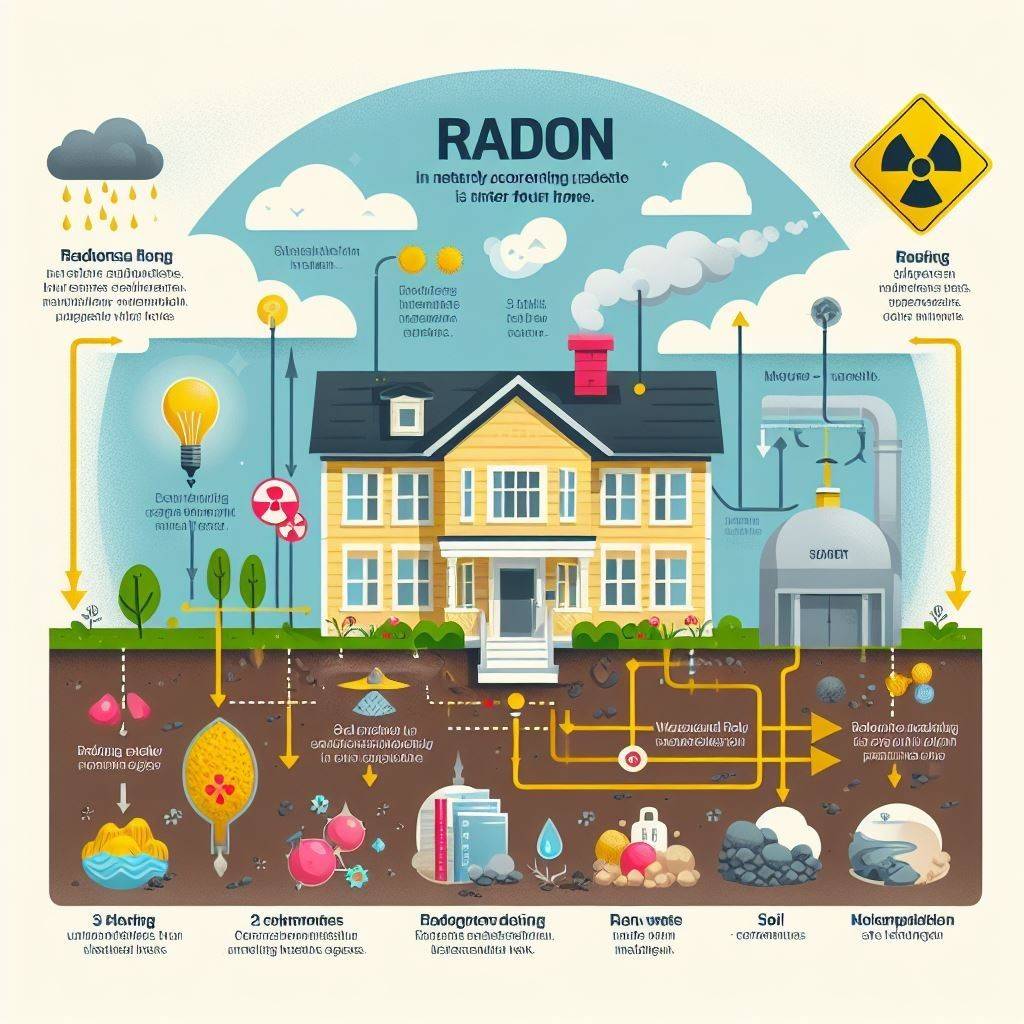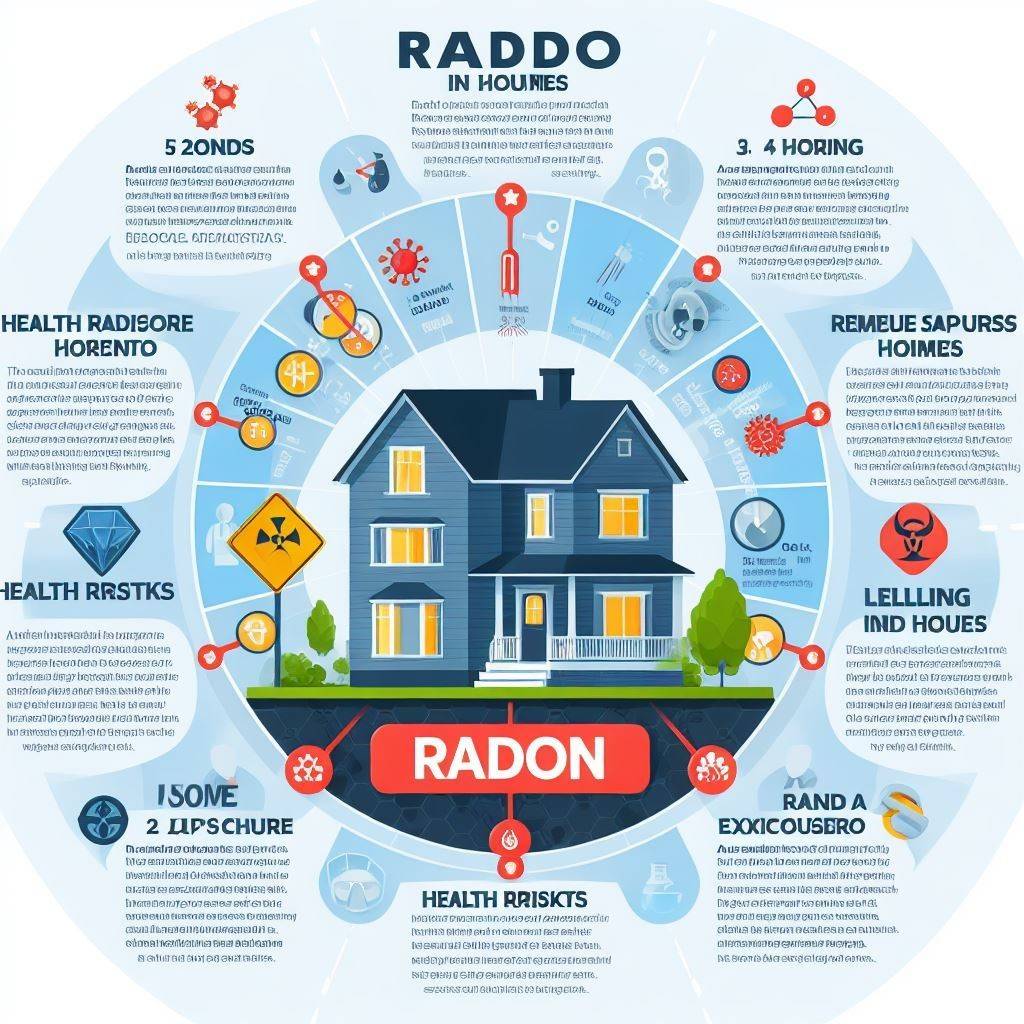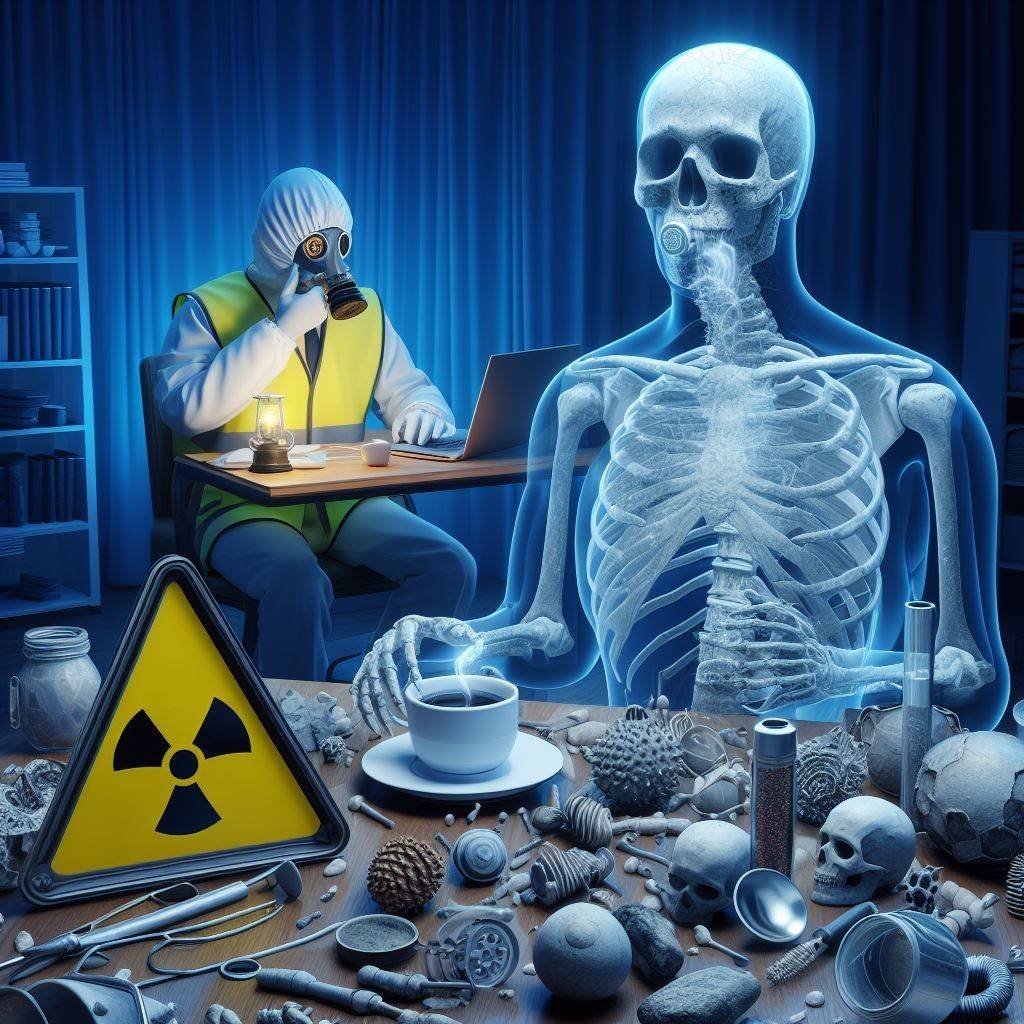Radon Health Problems: The Unseen Danger You Can’t Ignore
Discover the unseen danger of radon health problems. Learn how to protect yourself from this silent threat.
Key Takeaways:
| Radon Source | Health Risks | Prevention |
| Soil, Rock, Water | Lung Cancer, Respiratory Issues | Testing, Mitigation Systems |
| Building Materials | Increased Cancer Risk | Proper Construction, Ventilation |
Radon, a naturally existing radioactive element, is one of the leading causes of lung cancer worldwide. However, many homeowners remain unaware of the potential radon health problems lurking in their homes. This invisible threat is odourless, tasteless, and hard to detect without proper testing. Ignoring radon health problems can have devastating consequences, making it crucial to understand the risks and take appropriate action.
Understanding Radon Health Problems
Radon health problems arise when this radioactive gas accumulates in indoor spaces, such as homes, schools, and workplaces. When inhaled, radon and its decay products can damage lung tissue, leading to various respiratory issues and an increased risk of lung cancer.
As per data from the Environmental Protection Agency (EPA), radon-related health issues contribute to around 21,000 annual lung cancer fatalities in the United States, positioning it as the second most prevalent cause of lung cancer following tobacco use.
How Does Radon Enter Homes?

Radon gas naturally occurs in the soil and rocks beneath buildings. It can infiltrate residences via fissures in the building’s foundation. Floor drains, sump pumps, and other openings in the building’s structure. Radon can also be present in well water, further contributing to indoor air contamination.
Risk Factors for Radon Health Problems

While radon health problems can affect anyone, certain factors increase the risk:
- Location: Homes in areas with high levels of naturally occurring radon in the soil are at a higher risk.
- Construction Type: Homes with basements, crawl spaces, or built-on slabs tend to have higher radon levels due to increased contact with the soil.
- Building Materials: Some construction materials, such as concrete, rock, and certain types of insulation, can release radon into indoor spaces.
- Ventilation: Poor ventilation and airtight homes can lead to the accumulation of radon gas.
- Smoking: Individuals who smoke and are exposed to radon face an elevated likelihood of developing lung cancer, as the combined impact of radon and tobacco smoke amplifies the risk.
Effects of Radon Health Problems
The primary health concern associated with radon health problems is lung cancer. Radon exposure stands as the primary culprit behind lung cancer among non-smokers and poses a substantial risk for smokers as well. Besides lung cancer, extended exposure to elevated radon levels may also trigger various respiratory ailments, including:
- Chronic obstructive pulmonary disease (COPD)
- Asthma
- Pneumonia
- Respiratory infections
Additionally, some studies suggest that radon health problems may contribute to other types of cancer, cardiovascular diseases, and cognitive impairment, although more research is needed in these areas.
Detecting and Mitigating Radon Health Problems
The only way to determine if your home has elevated radon levels is through proper testing. Here are the steps you can take to detect and mitigate radon health problems:
Testing for Radon
- Short-term Testing: Testing over a brief period, lasting between 2 and 90 days, provides a snapshot of radon levels during the testing period.
- Long-term Testing: Extended duration testing, lasting more than 90 days, provides a more accurate assessment of average radon levels over an extended period.
Both short-term and long-term tests are available in various forms, including charcoal canisters, alpha track detectors, and continuous radon monitors. It’s recommended to follow EPA guidelines for proper testing procedures and interpreting test results.
Mitigating High Radon Levels
If the radon levels in your home exceed the EPA’s recommended action level of 4 picocurie per liter (pCi/L), it’s essential to take mitigation measures. Here are some common radon mitigation techniques:
- Active Soil Depressurization (ASD): ASD systems use a fan and piping to draw radon gas from beneath the foundation and vent it outside, preventing it from entering the home.
- Sealing and Caulking: Sealing cracks and openings in the foundation, floors, and walls can help reduce radon entry points.
- Increasing Ventilation: Improving ventilation by installing exhaust fans or opening windows can help dilute indoor radon levels.
- Radon-Resistant Construction: For new construction, incorporate radon-resistant techniques, Examples include the implementation of a gas-permeable membrane beneath the building’s foundation and the utilization of effective ventilation systems, which can help prevent radon entry.
It is essential to enlist the expertise of a certified radon mitigation specialist to evaluate your residence and advise on the optimal mitigation approach tailored to your circumstances.
Radon Awareness and Regulations
Recognizing the severity of radon health problems, various organizations and government agencies have implemented guidelines and regulations to raise awareness and protect public health:
- The Environmental Protection Agency (EPA) offers directives on radon examination and remediation, along with initiatives to raise public awareness.
- The World Health Organization (WHO) classifies radon as a human carcinogen and provides recommendations for radon exposure reduction.
- Many states and municipalities have adopted radon-related laws and regulations, including requirements for radon testing during real estate transactions and mandatory mitigation in new construction.
Despite these efforts, public awareness of radon health problems remains relatively low, highlighting the need for continued education and outreach.
Radon health problems pose a significant risk to public health, yet this invisible threat often goes undetected in homes and buildings. By understanding the sources, health impacts, and mitigation strategies, you can take proactive steps to protect yourself and your loved ones from the dangers of radon exposure.
Remember, the only way to detect radon is through proper testing. If elevated levels are found, it’s crucial to work with certified professionals to implement effective mitigation strategies. By prioritizing radon testing and taking necessary precautions, you can safeguard your family’s health and well-being from this unseen danger.
FAQs
Is radon a problem in all homes?
While radon can be present in any home, the levels vary depending on location, construction type, and building materials. However, it’s essential to test for radon regardless of the perceived risk, as it’s the only way to accurately determine the levels in your home.
How often should I test for radon?
The EPA recommends testing for radon every two years and after any major renovations or changes that could affect the airflow or radon entry points in your home. If you’ve installed a radon mitigation system, it’s recommended to conduct periodic follow-up testing to ensure its effectiveness.
Can opening windows reduce radon levels?
Opening windows can help dilute indoor radon levels temporarily, but it’s not a long-term solution. Radon gas will continue to enter your home through cracks and openings, and the levels will build up again once the windows are closed.
Is radon a problem only in basements or lower levels?
While radon tends to be more concentrated in lower levels and basements due to its proximity to the soil, it can still be present on upper floors. Proper testing is recommended for all levels of your home to accurately assess the radon levels.
Can radon cause health problems other than lung cancer?
While lung cancer is the primary health concern associated with radon exposure, some studies suggest that prolonged exposure to high levels of radon may also contribute to other respiratory issues, cardiovascular diseases, and cognitive impairment. However, more research is needed in these areas.
Remember, taking proactive measures to address radon health problems is crucial for safeguarding your family’s well-being. Don’t ignore this invisible threat. – take action today by testing your home and implementing appropriate mitigation strategies if necessary.



